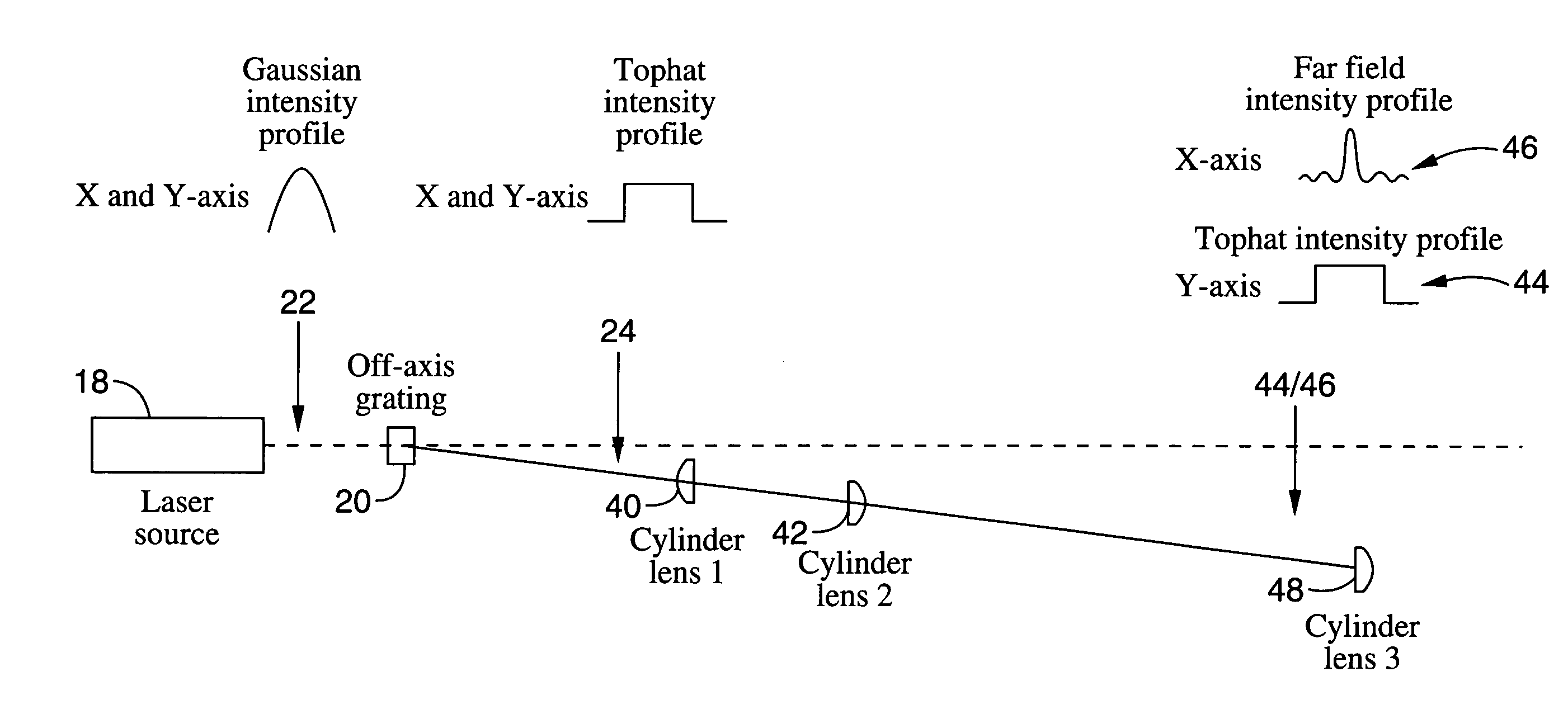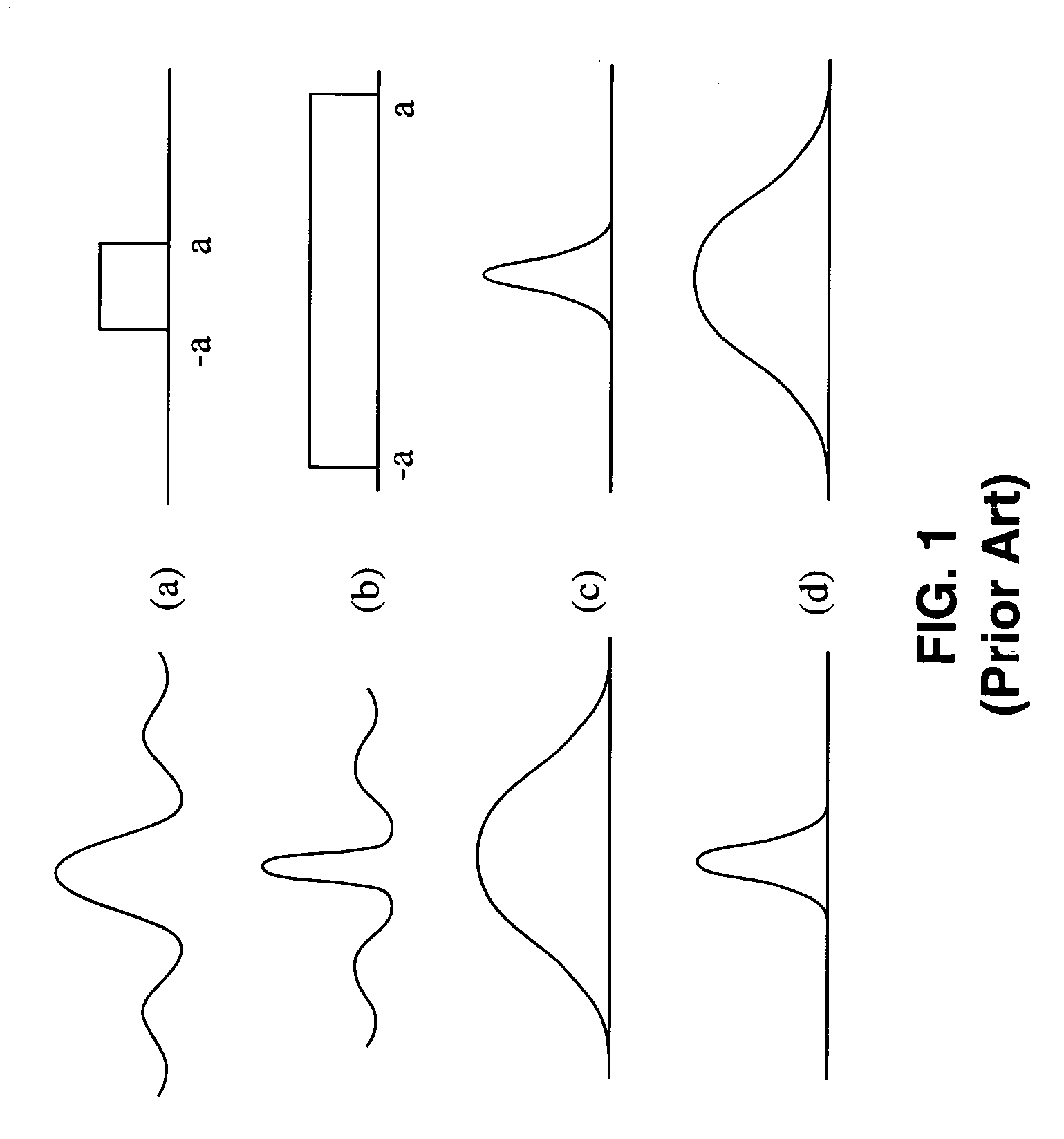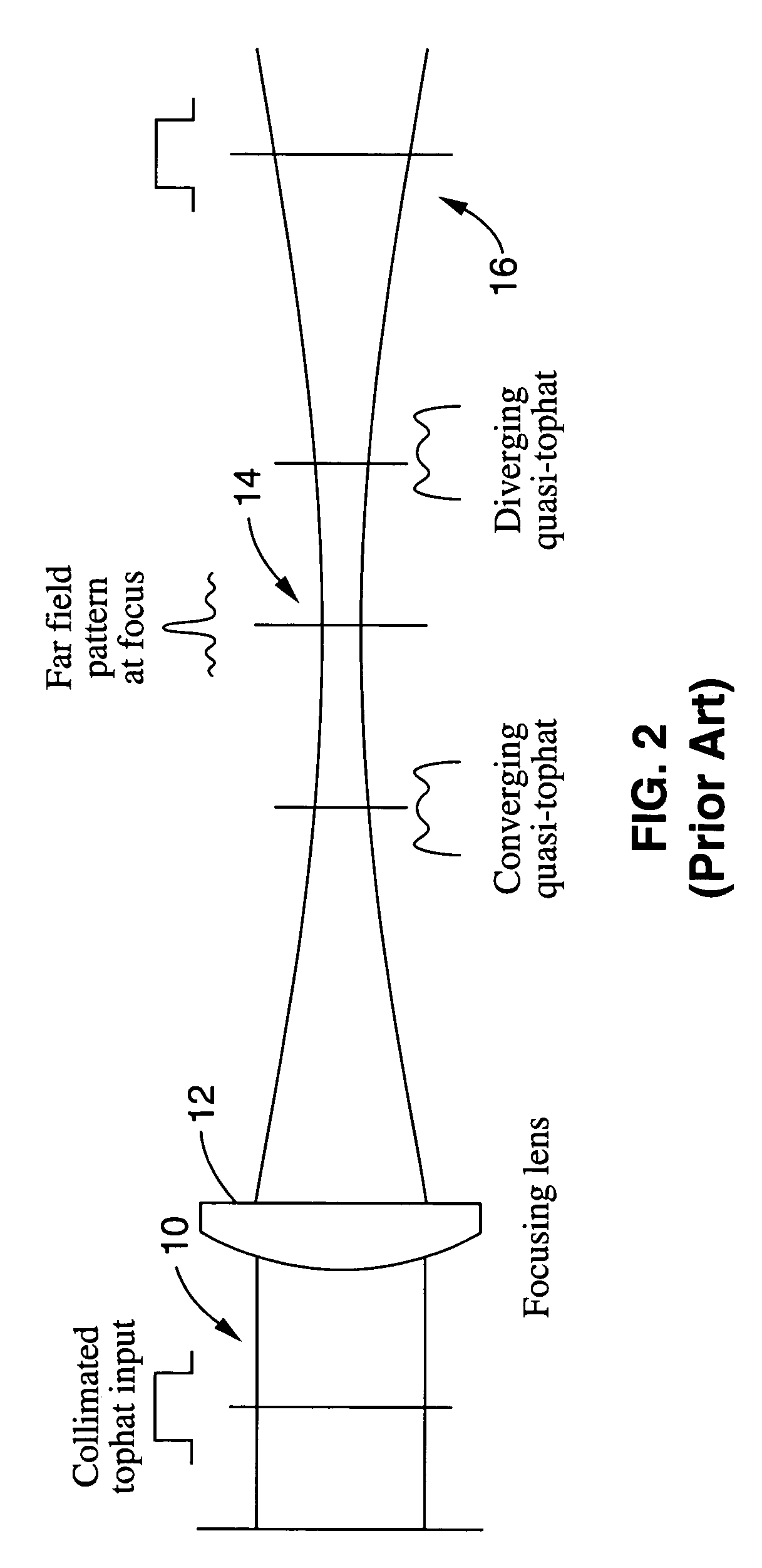Method and apparatus for transformation of a gaussian laser beam to a far field diffraction pattern
- Summary
- Abstract
- Description
- Claims
- Application Information
AI Technical Summary
Benefits of technology
Problems solved by technology
Method used
Image
Examples
example 1
[0036]A Gaussian intensity profile He—Ne laser (632.8 nm) with a beam diameter of 0.8 mm (1 / e2) was positioned adjacent an off-axis near field beam shaper (remapping) single element diffractive optic. A pair of refractive lenses spaced at a distance to produce a slightly converging wave front were positioned downstream of the diffractive optic as shown in FIG. 3. The remapping diffractive optic was designed to produce a 10th order super-Gaussian profile at a beam diameter of 2 mm. This profile was transformed to a far field pattern by the pair of lenses. The configuration produced an intermediate focus between lens 22 and lens 24. Once the system was aligned, the far field pattern was able to propagate for several meters. With this configuration a slightly diverging far field pattern was produced and propagated through a 200 mm focal length lens. The intensity pattern around the focal plane was measured with a CCD camera and digital beam analysis software. The CCD camera had a pixel...
example 2
[0037]Consider a propagating far field pattern with a beam diameter of 3 mm (measured to the second null) where its full angle divergence is approximately 3 mrad and its wavelength is 632.8 nm. The calculated M2 is approx 11. Using a 200 mm focal length lens, the expected spot diameter is 0.3 mm. The Rayleigh range for the spot around the focal plane would be 110 mm. Since ZR only tells us about spot size, we need to bring in more information to describe the intensity profile changes around the focal plane. An example in Gori's work referenced previously (Gori, F. “Flattened Gaussian beams,” Opt. Comm. 107, pp. 335–341, 1994) describes a 632.8 nm beam with a Wo=1 mm. The ZR for this beam would be approximately 5 meters; however, Gori shows that the beam profile changes significantly over distances on the order of several hundred millimeters. For his N=25 example, the intensity profile degrades to ±15% uniformity over the flat top in a distance of 400 mm. As a rough estimate for corr...
example 3
[0038]Data was taken using both round and square uniform intensity remapping diffractive optics. For both cases, the parameters in the above example are an accurate description. The measured spot diameter at the focal plane was 0.310 mm. This value agrees with the prediction to within 5%. The measured uniform depth of field symmetric around the focal plane was 6 mm. This is a factor of 3 off the prediction, but gives us a rough order of magnitude. One possibility for this difference is that the super-Gaussian in this experiment did not equate well with the example from Gori. If the super-Gaussian used here has a steeper edge slope than Gori's example, the uniformity would degrade more rapidly and this would shorten the uniform depth of field value. Further investigation is needed to conclusively determine this difference. For the case of the square uniform profile, the values were very similar to the round case. The transform pattern for the square uniform profile takes the shape of...
PUM
 Login to View More
Login to View More Abstract
Description
Claims
Application Information
 Login to View More
Login to View More - R&D
- Intellectual Property
- Life Sciences
- Materials
- Tech Scout
- Unparalleled Data Quality
- Higher Quality Content
- 60% Fewer Hallucinations
Browse by: Latest US Patents, China's latest patents, Technical Efficacy Thesaurus, Application Domain, Technology Topic, Popular Technical Reports.
© 2025 PatSnap. All rights reserved.Legal|Privacy policy|Modern Slavery Act Transparency Statement|Sitemap|About US| Contact US: help@patsnap.com



